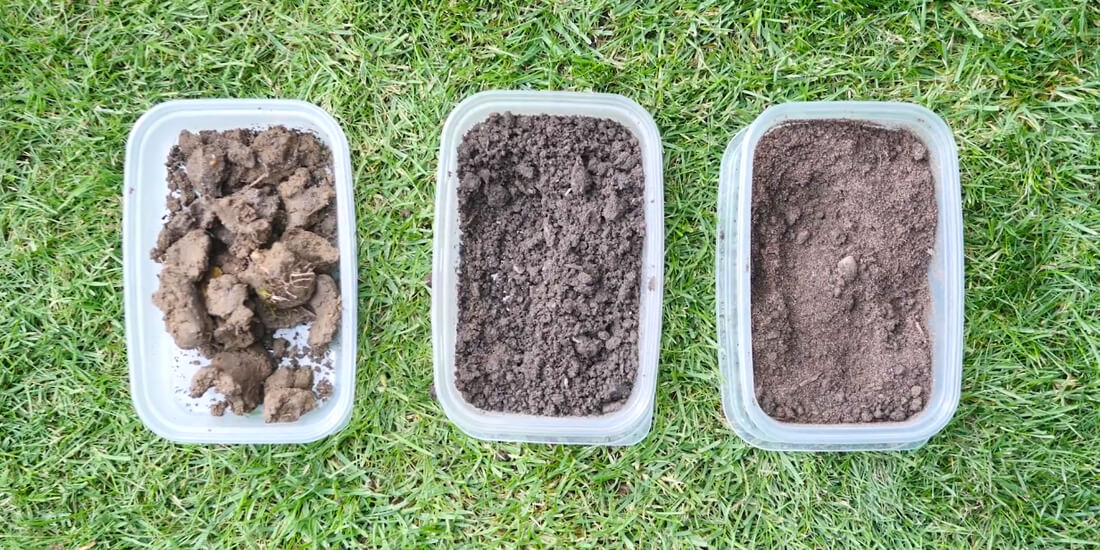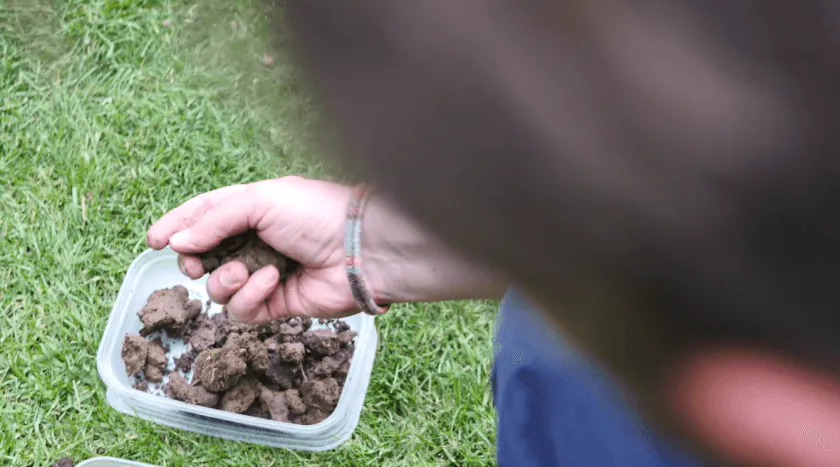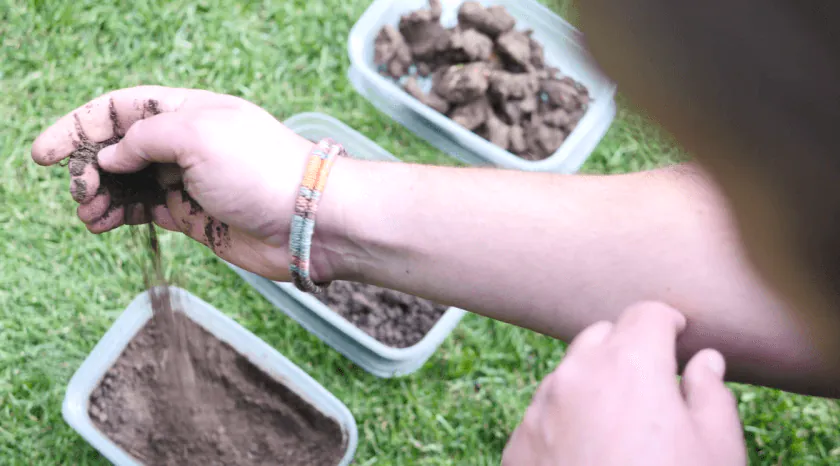Grass seed for different soil types

With so many promises on the front of grass seed products on garden centre shelves, finding the right grass seed for your soil type can be troublesome. However, a grass mix’s ability to grow in different soil types all comes down to the grass seed in it.
Some grass seed types are better at growing in some conditions than others. If your lawn is refusing to grow, then you could need grass seed for different soil types. By picking the correct seed type suited to your garden soil, you can create a beautiful, healthy lawn that will thrive.
This guide outlines various seed mixtures that are ideal for different soil types - clay, sandy and normal/loam type. If your grass happens to be struggling, there's a good chance you need grass seed for a different soil. And our goal is to help your lawn thrive.
Knowing how to sow grass seed correctly will also help your garden lawn flourish!
Grass seed for heavy clay soils
Heavy clay soils are usually full of nutrients. This is of course an advantage, but they can be a nightmare to work with due to the amount of ‘clumping’ that often occurs. But this is also what causes the soil to be nutrient-laden, as the nutrients stick to the soil.
You will most likely have clay soils if:
- You can mould your soil in your hand and it's almost like plasticine
- The soil is clumped together and difficult to break up
- The soil becomes compacted and appears cracked in warm and dry weather
- In cold and wet weather, the soil's poor drainage may cause your garden to flood
- You may also sink into it when walking on it

Best grass seed for heavy clay soils
Our IMPRESS: Clay Master mix contains the very best grass seed for heavy clay soils. So, what’s in the mix, and what does it do?
This mix is mainly made up of perennial ryegrass, renowned for its hardwearing ability. This seed type is up there with some of the toughest of grasses and is the ultimate ‘all rounder’ grass seed.
If perennial ryegrass can’t grow in problematic soils, then there is a problem! It also grows incredibly fast. So, if a week or so after sowing you see a sheen of green grass come up – it's probably your perennial ryegrass!
IMPRESS: Clay Master also features a high content of Tall Fescue in the mix. Fescues are typically finer-leafed and can root up to 2-3ft deep in the earth. This rooting depth is needed for heavy clay soils that are difficult to penetrate.
Last but not least, this mix contains 5% Smooth Stalked Meadow Grass which is drought tolerant and can also recover well after traffic. This is ideal for heavy clay soils that can be easily compacted.
Smooth Stalked Meadow Grass is also sometimes called Kentucky Blue Grass and is well known for being the ideal seed for any lawn.
Grass seed for sandy soils
At first glance, sandy soils can appear to be the ideal soil for most situations. However, they can present a few challenges that make it difficult for some grass seed varieties to grow. Sandy soils are typically free draining (unlikely to flood) but they are low in nutrients. Their benefits are almost the opposite of clay soils.
You will most likely have sandy soils if:
- When in your hand, your soil can run freely through your hands – like sand!
- It is impossible to mould and it does not stick together
- As the soils are free draining, you may find that they get extremely dry
- Previous grass-growing endeavours may have failed (this would be due to the low nutrients in the soil)

Best grass seed for sandy soils
Sandy soils will always thrive with a 100% fescue mix which is what we used in our THRIVE: Sandy Soils – why did we do this?
Well, fescues are extremely drought tolerant, and sandy soils are extremely drought-prone! Alongside this, fescues grow well in shallow conditions, they grow fine and will also tolerate close mowing. So, if you want to get those statement stripes on your sandy soils, our THRIVE: Sandy Soils mix is the best option for you.
Chewings Fescue, Sheeps Fescue and Strong Creeping Red Fescue each have the attributes that make them ideal for sandy soils. Chewings Fescue is inherently drought tolerant, Sheeps Fescue survives and thrives in low nutrient soils and Strong Creeping Red Fescue is highly tolerant of most adverse soil conditions.
Grass seed for normal/loam type soils
Loam-type soil is ideal for sowing. Its composition is made up of some sand, some clay and some silt - which is a mixture of the two. It benefits from the positive properties of both, is free draining and is nutrient-filled. Any grass seed will grow in these conditions, so the next step is to consider what you need for your lawn.
It’s up to you whether you want a hardwearing, fast-growing family lawn or an ornamental one. You may also want to consider the amount of shade in your lawn and find a grass mix that will suit your dappled or permanent shade.
Can I turn my clay/sandy soils into loam-type soils?
A lot of people will add topsoil to improve their soil quality – but over time this will not dramatically change the makeup of the soil. If you wish to change your soil makeup, it will take a lot of time, care, attention and adjustment, and it may prove to be more hassle than it's worth.
Otherwise, you can accept your soils for what they are and sow the correct and best grass mix for them!
If you’re curious about grass seeds and the characteristics of some of the species in our mixtures, we’ve broken it down in our grass seed guide.
We also have helpful tips on how long grass seed takes to grow and when is the best time to sow grass seed.